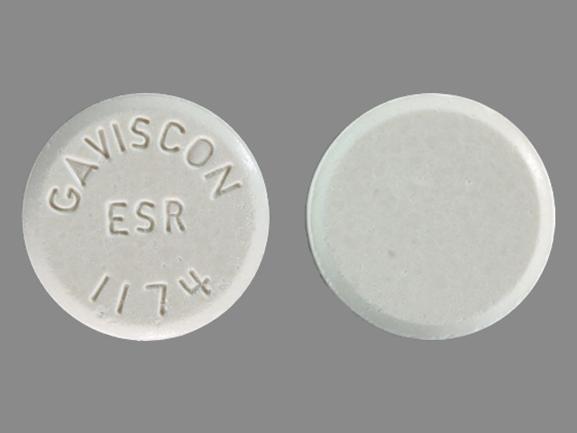Gaviscon Extra Relief Formula Disease Interactions
There are 2 disease interactions with Gaviscon Extra Relief Formula (alginic acid / aluminum hydroxide / magnesium carbonate).
Aluminum-containing antacids (applies to Gaviscon Extra Relief Formula) constipation
Major Potential Hazard, High plausibility. Applicable conditions: Renal Dysfunction, Intestinal Obstruction, Phosphate Imbalance
Aluminum containing antacids may produce constipation, which may lead to intestinal obstruction. Osteomalacia and hypophosphatemia may be produced in patients with renal dysfunction who are not receiving dialysis. Patients with renal dysfunction, intestinal obstruction, osteomalacia, or hypophosphatemia should use antacids with low or no aluminum content.
Magnesium salts (applies to Gaviscon Extra Relief Formula) renal dysfunction
Major Potential Hazard, High plausibility.
Magnesium is eliminated by the kidney. The serum concentration of magnesium is increased in patients with renal impairment. Magnesium toxicity includes CNS depression, muscular paralysis, respiratory depression, hypotension and prolonged cardiac conduction time. Disappearance of the patellar reflex is a useful clinical sign of magnesium intoxication. Therapy with magnesium should be administered cautiously and dosages should be modified in patients with compromised renal function. Clinical monitoring of serum magnesium levels is recommended.
Switch to professional interaction data
Gaviscon Extra Relief Formula drug interactions
There are 256 drug interactions with Gaviscon Extra Relief Formula (alginic acid / aluminum hydroxide / magnesium carbonate).
Gaviscon Extra Relief Formula alcohol/food interactions
There is 1 alcohol/food interaction with Gaviscon Extra Relief Formula (alginic acid / aluminum hydroxide / magnesium carbonate).
More about Gaviscon Extra Relief Formula (alginic acid / aluminum hydroxide / magnesium carbonate)
- Check interactions
- Compare alternatives
- Drug images
- Side effects
- Dosage information
- During pregnancy
- Drug class: antacids
Related treatment guides
Drug Interaction Classification
| Highly clinically significant. Avoid combinations; the risk of the interaction outweighs the benefit. | |
| Moderately clinically significant. Usually avoid combinations; use it only under special circumstances. | |
| Minimally clinically significant. Minimize risk; assess risk and consider an alternative drug, take steps to circumvent the interaction risk and/or institute a monitoring plan. | |
| No interaction information available. |
Further information
Always consult your healthcare provider to ensure the information displayed on this page applies to your personal circumstances.


